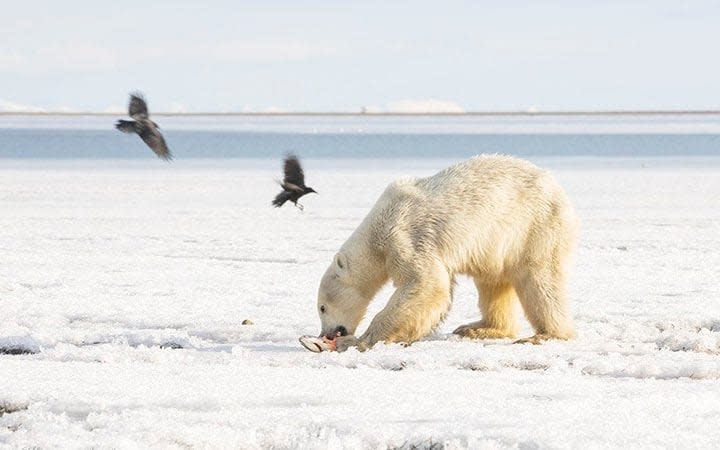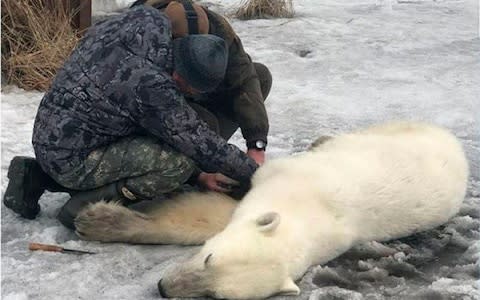'Air bear' flight to Russian Arctic returns polar bear who drifted 400 miles south on ice

An “air bear” helicopter flight has returned a polar bear to the Russian Arctic after he drifted more than 400 miles south on an ice floe.
Fishermen ran into the two-year-old male bear last week near Tilichiki, an isolated village in the Kamchatka region on Russia's Pacific coast.
Since polar bears are not usually found in Kamchatka, it is believed that the marooned bear had floated in on a piece of ice from the neighbouring Chukotka region. He was nicknamed “Umka” after the playful polar bear from a Soviet cartoon.
The ice and shores of the Chukchi Sea between Chukotka and Alaska are home to 3,000 polar bears, according to a 2018 study, the largest population of the world's largest land predator. They also live on the Bering Sea just to the south.
But as sea ice melts further and faster due to global warming, polar bears are being seen more frequently outside their normal habitat.
A Russian military town on the Arctic island of Novaya Zemlya was "invaded" by polar bears in February.
A study published on Tuesday said the release of methane and carbon dioxide from thawing permafrost will accelerate climate change. Taken into account with the loss of heat-deflecting ice, this will increase global warming by 5 per cent and add up to £54tn in economic consequences.
Craters discovered in northern Russia in recent years are believed to mainly be caused by the explosion of methane hydrates amid rising temperatures.
Hungry after his journey, Umka was filmed wandering through Tilichiki and a nearby village, having swum across the bay between them. Locals fed him fish and four pounds of candy.
“What a beauty!” one resident can be heard exclaiming in a video.
The disoriented bear would not have been able to make his way home across hundreds of miles of coastline, however, and scientists feared he would not survive the relatively warm weather and uncustomary food supply in Kamchatka.
The sea ice there is generally too thin for polar bears to hunt seals on it.
“In Kamchatka, the feed base does not suit them. So most likely such guests will die,” Siberian Times quoted wildlife official Vladimir Gordienko as saying.
The Kamchatka governor ordered the emergencies ministry to catch the creature and fly him back to Chukotka in a special operation that was almost like an Arctic version of Dumbo Drop.
But Umka initially ran away from his would-be rescuers, and then the flight had to be postponed due to poor weather.

Once they finally departed on Monday, the sedated bear awoke in his cage mid-flight and was reportedly frightened by the loud thrumming of the motors in the Soviet-designed Mi-8 helicopter.
Upon disembarking on Cape Navarin in Chukotka, 450 miles to the north, a specialist armed with a shotgun pulled up the door of the cage, and Umka bounded out into the snowy landscape.
But experts expect such instances to occur more often as climate change amplifies the breakup of sea ice.
“The ice in the Bering Sea is unstable, and bears are being carried south with the ice floes,” scientist Anatoly Kochnev told the government newspaper. “There the ice breaks up, and they swim to the nearest shore.”
Bears are not the only animals suffering. Chukotka was also where David Attenborough's new series Out Planet filmed walruses plunging to their deaths after they had been forced onto coastal cliffs by melting sea ice.

 Yahoo News
Yahoo News 
